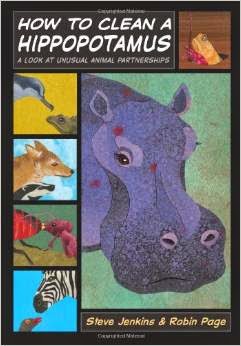 You may know about the symbiotic relationship between the oxpecker and the African buffalo, or the one between the clownfish and the anemone. But did you know that coyotes and badgers will team up to hunt prairie dogs? When the prairie dogs see danger, they rush into their burrows. The badger digs, sending the rodents to the coyote, which is waiting at the exit. Finding danger there, the prairie dogs turn around and exit into the jaws of the waiting badger. New Zealand's tuatara (a nocturnal reptile) and petrel (a bird active in the daytime) will share a home. The tuatara keeps the petrel's nesting burrow pest-free and defends it against animals that threaten the bird and its eggs. In exchange, it gets a place to sleep during the daytime, when the petrel is away. And, it turns out that the honey badger (or ratel) does care -- at least about the honeyguide! The honeyguide is a bird that will trail a bee back to its hive. The bird isn't strong enough to break into the nest, so it fetches a ratel. Once the ratel has feasted on the honey, the honeyguide enjoys some honeycomb and juicy bee larvae. And the rufous woodpecker and black tree ants will even call a truce in their usually tense relationship while the woodpecker cares for its eggs and rears its young -- protecting the ant nest at the same time. Once the chicks leave home, the woodpecker goes back to eating the ants and the ants go back to stinging the woodpecker!
You may know about the symbiotic relationship between the oxpecker and the African buffalo, or the one between the clownfish and the anemone. But did you know that coyotes and badgers will team up to hunt prairie dogs? When the prairie dogs see danger, they rush into their burrows. The badger digs, sending the rodents to the coyote, which is waiting at the exit. Finding danger there, the prairie dogs turn around and exit into the jaws of the waiting badger. New Zealand's tuatara (a nocturnal reptile) and petrel (a bird active in the daytime) will share a home. The tuatara keeps the petrel's nesting burrow pest-free and defends it against animals that threaten the bird and its eggs. In exchange, it gets a place to sleep during the daytime, when the petrel is away. And, it turns out that the honey badger (or ratel) does care -- at least about the honeyguide! The honeyguide is a bird that will trail a bee back to its hive. The bird isn't strong enough to break into the nest, so it fetches a ratel. Once the ratel has feasted on the honey, the honeyguide enjoys some honeycomb and juicy bee larvae. And the rufous woodpecker and black tree ants will even call a truce in their usually tense relationship while the woodpecker cares for its eggs and rears its young -- protecting the ant nest at the same time. Once the chicks leave home, the woodpecker goes back to eating the ants and the ants go back to stinging the woodpecker!These are just a few of the symbiotic relationships explored in this fascinating book. The last few pages tell about the size of each animal mentioned in the book, and an end note points out that animals don't enter into these relationships out of friendship, but because the relationships help the animals survive. A bibliography is included.
Written in the style of a graphic novel, brief text accompanies illustrations of cut and torn paper. Written for early elementary ages, it has a Lexile score of 950.

